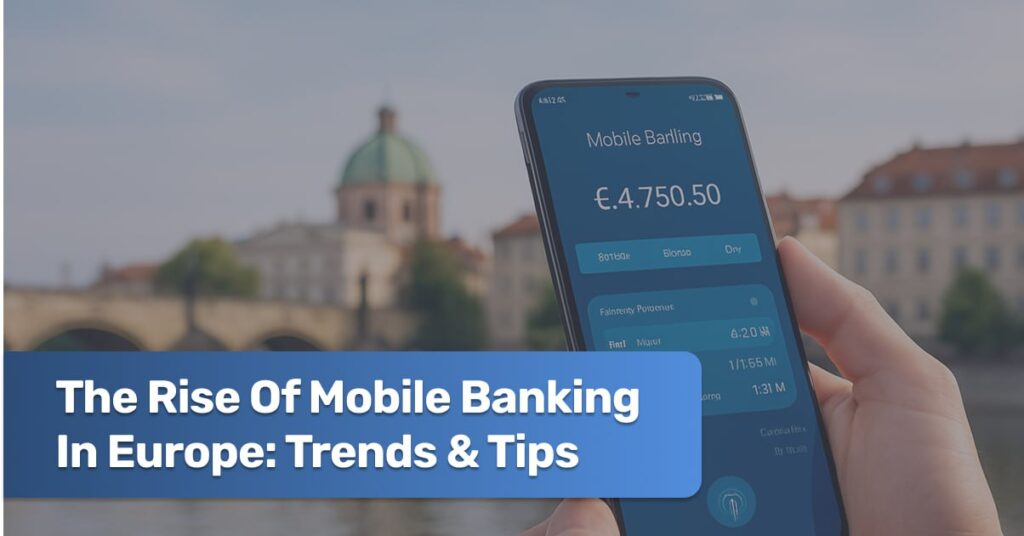Recetly, mobile banking in Europe has shifted from a niche convenience to a financial necessity. With over 75% of Europeans using smartphones for their daily banking needs, the digital transformation of the banking sector is not just on the way — it’s already here.
Whether you’re managing personal finances or operating a business, understanding the trends driving mobile banking in Europe — and how to take advantage of them — can save you time, money, and stress.
Mobile Banking in Europe: Key Trends to Watch
1. Rapid User Adoption
From Lisbon to Tallin, consumers are ditching desktop logins and heading straight to apps. As of 2025, over 60% of European adults are actively using mobile banking apps, with countries like Sweden, Finland, and the Netherlands leading the charge.
Why it matters: Banks are investing more in app development than in physical branches, making mobile platforms the primary customer touchpoint.
2. Rise of Neobanks and App-First Institutions
Neobanks like Revolut, N26, and Bunq have set new standards in mobile banking UX, offering instant notifications, low-fee currency exchange, and budget management tools — all without physical branches.
Trend tip: Traditional banks are now scrambling to catch up by revamping their own apps or launching spin-off mobile platforms (e.g. Yolt, Marcus by Goldman Sachs).
3. Biometric Security as the New Standard
European consumers are increasingly comfortable with fingerprint and facial recognition. PSD2 regulations and GDPR compliance have helped standardize and secure mobile banking apps across the EU.
Why it matters: Banks are focusing on frictionless security, enabling fast logins and safe transactions without compromising privacy.
4. Integrated Financial Tools
Mobile apps are now more than just account viewers. They’re becoming personal finance hubs, offering:
- Smart budgeting insights
- Investment portfolios
- Insurance management
- Crypto wallets
- Bill-splitting tools
Apps like Revolut or Wise are even replacing multi-platform services with all-in-one financial ecosystems.
5. Cross-Border Accessibility
With the EU’s digital single market, mobile banking apps are now more accessible across borders. Expats, remote workers, and digital nomads are turning to mobile-first banks for ease of use across countries.
If you travel a lot or you are an expat in Europe: Look for apps that support multi-currency accounts and SEPA transfers, essential for anyone living or working abroad in Europe.
Tips to Get the Most Out of Mobile Banking in Europe
Choose the Right App for Your Needs
Not all apps are created equal. If you’re focused on:
- Saving → Look for features like automated savings pots and interest boosters.
- Spending Abroad → Choose apps with low FX fees and multi-currency wallets.
- Investing → Use platforms that integrate with ETFs, stocks, or crypto investments.
Enable Real-Time Alerts
Set up notifications for every transaction to spot suspicious activity early and maintain tight control over your budget.
Use Strong Authentication
Always enable biometric login or two-factor authentication (2FA). It’s an easy win for security and peace of mind.
Compare Fees Carefully
Even among mobile banks, fees can vary wildly. Always check:
- ATM withdrawal limits
- Foreign transaction fees
- Monthly subscription tiers (many offer free basic plans)
Keep Your App Updated
Banking apps are frequent targets for cyber threats. Updates often include important security patches, so don’t delay installs.
What’s Next for Mobile Banking in Europe?
As AI, open banking APIs, and embedded finance become more prominent, mobile banking will continue to evolve. Expect:
- AI-powered financial advice directly in-app
- Deeper integration with third-party apps (e.g. accounting, tax tools)
- Voice-based banking assistants
- Green banking initiatives via mobile (carbon tracking, ESG investing)
Final Thoughts
The rise of mobile banking in Europe is more than a tech trend — it’s a financial lifestyle shift. With enhanced security, cross-border features, and personalized insights, mobile apps are quickly becoming the primary way Europeans interact with money.
Whether you’re a digital native or just getting started, embracing mobile banking can make your financial life smarter, faster, and more secure.

